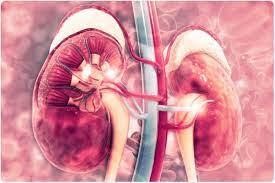A nurse is providing discharge teaching to a client who has chronic kidney disease and is receiving haemodialysis. Which of the following instructions should the nurse include in the teaching?
Eat 1 g/kg of protein per day.
Drink at least 3 L of fluid daily.
Consume foods high in potassium.
Take magnesium hydroxide for ingestion.
The Correct Answer is A
Choice A reason:
Eating 1 g/kg of protein per day is the appropriate recommendation. When providing discharge teaching to a client with chronic kidney disease (CKD) who is receiving haemodialysis, the nurse should include the instruction to eat an appropriate amount of protein, which is usually recommended at a specific daily intake based on the client's weight.
Clients with CKD often have dietary restrictions, including limiting protein intake to reduce the workload on the kidneys. However, protein intake is still necessary for maintaining muscle mass and overall health. The recommended protein intake for clients with CKD undergoing haemodialysis is typically around 1 gram of protein per kilogram of body weight per day.
Choice B reason:
Drink at least 3 L of fluid daily. Clients receiving haemodialysis typically have fluid restrictions, as impaired kidney function can lead to fluid retention and electrolyte imbalances. The specific fluid allowance will be determined by the healthcare provider based on the client's individual needs, and it may be significantly less than 3 L per day.
Choice D option
Take magnesium hydroxide for ingestion. Magnesium hydroxide is a laxative and antacid used to relieve constipation and heartburn. It is not typically prescribed for clients with chronic kidney disease, especially without proper evaluation of their kidney function and overall medical condition.
Choice C option:
C. Consume foods high in potassium.
Clients with chronic kidney disease, especially that undergoing haemodialysis, often need to restrict potassium intake. Impaired kidney function can lead to the build-up of potassium in the blood, which can be harmful. Therefore, it is essential for clients with CKD to avoid or limit foods high in potassium.

Nursing Test Bank
Naxlex Comprehensive Predictor Exams
Related Questions
Correct Answer is C
Explanation
The correct answer is choice C. A client who was just given a glass of orange juice for a low blood glucose level.
This client should be assessed first because they are at risk of hypoglycemia, which is a medical emergency that can cause seizures, coma, or death if not treated promptly.
The nurse should check the client’s blood glucose level again and provide additional carbohydrates or glucose if needed.
Choice A is wrong because a client who is scheduled for a procedure in 1 hr is not in immediate danger and can be assessed later.
The nurse should verify the client’s consent, allergies, and vital signs before the procedure, but this is not a priority over a client with low blood glucose.
Choice B is wrong because a client who received a pain medication 30 min ago for postoperative pain is likely to have improved pain relief and does not need immediate assessment.
The nurse should monitor the client’s pain level, vital signs, and respiratory status periodically, but this is not a priority over a client with low blood glucose.
Choice D is wrong because a client who has 100 mL of fluid remaining in his IV bag is not in immediate danger and can be assessed later.
The nurse should change the IV bag when it is empty or nearly empty, but this is not a priority over a client with low blood glucose.
Normal blood glucose levels are between 70 to 100 mg/dL (3.9 to 5.5 mmol/L) when fasting, and less than 140 mg/dL (7.8 mmol/L) two hours after eating. A blood glucose level below 70 mg/dL (3.9 mmol/L) is considered hypoglycemia and requires immediate treatment. Orange juice is a source of simple carbohydrates that can raise blood glucose quickly, but it may not be enough to prevent hypoglycemia in some cases.
Correct Answer is D
Explanation
Provide humidification of the room air. This is because humidification can help moisten the oral mucosa and reduce the discomfort of xerostomia. Xerostomia is a condition of dry mouth caused by reduced or absent saliva flow, which can occur after radiation therapy to the head and neck area.
Choice A is wrong because rinsing the mouth with an alcohol-based mouth wash can irritate the oral tissues and worsen xerostomia. Alcohol can also dehydrate the mouth and reduce saliva production.
Choice B is wrong because esophageal speech is a method of voice restoration after laryngectomy, not a treatment for xerostomia.
Esophageal speech involves swallowing air into the esophagus and releasing it to create sound.
It has nothing to do with saliva flow or dry mouth.
Choice C is wrong because saltine crackers are dry and hard to swallow without adequate saliva.
They can also scratch the oral mucosa and cause pain or bleeding. Offering the client saltine crackers between meals can aggravate xerostomia and increase the risk of choking.
Normal ranges for saliva flow vary depending on the method of measurement, but generally, a stimulated saliva flow rate of less than 0.7 mL/min or an unstimulated saliva flow rate of less than 0.1 mL/min is considered indicative of xerostomia.
Whether you are a student looking to ace your exams or a practicing nurse seeking to enhance your expertise , our nursing education contents will empower you with the confidence and competence to make a difference in the lives of patients and become a respected leader in the healthcare field.
Visit Naxlex, invest in your future and unlock endless possibilities with our unparalleled nursing education contents today
Report Wrong Answer on the Current Question
Do you disagree with the answer? If yes, what is your expected answer? Explain.
Kindly be descriptive with the issue you are facing.
